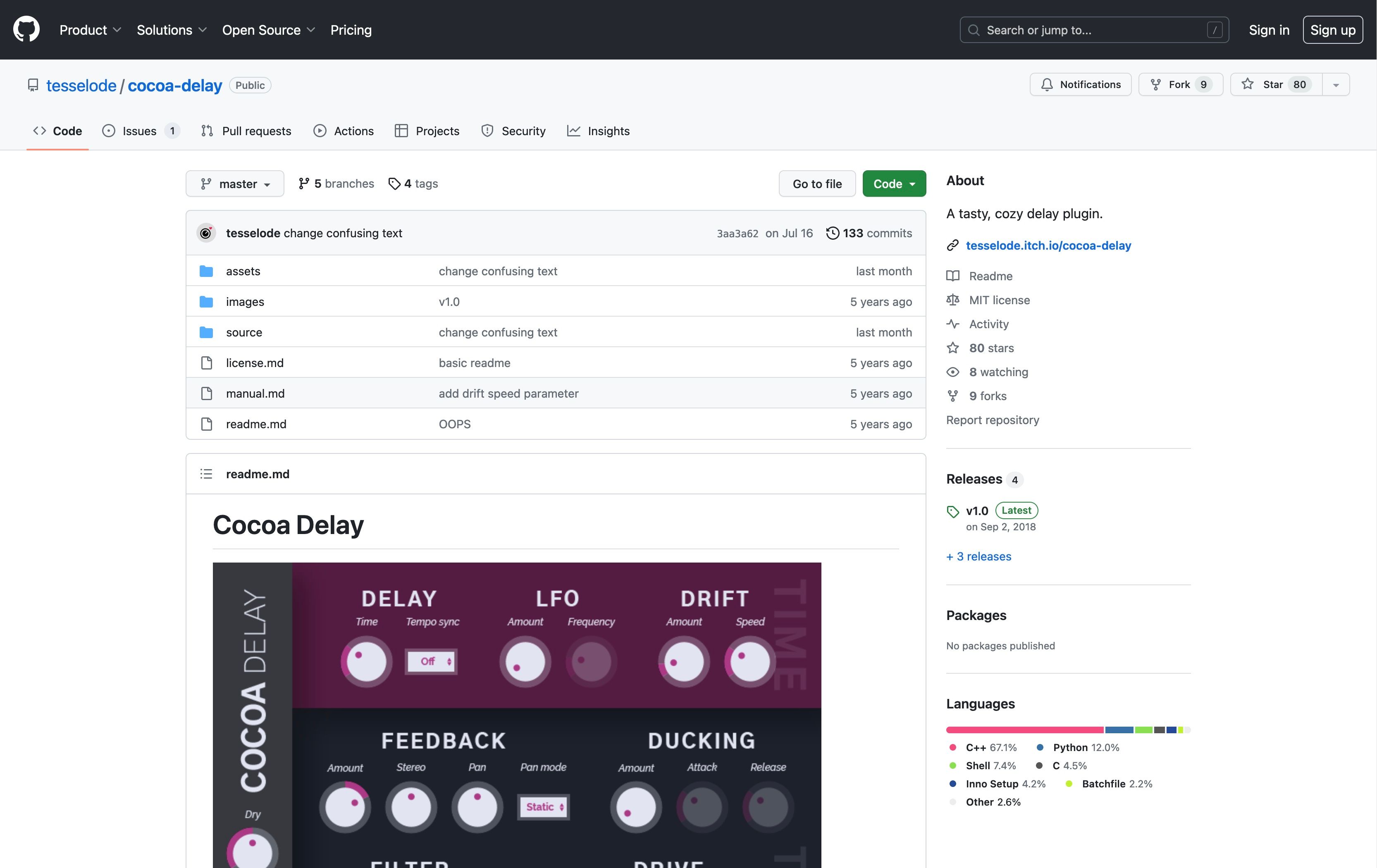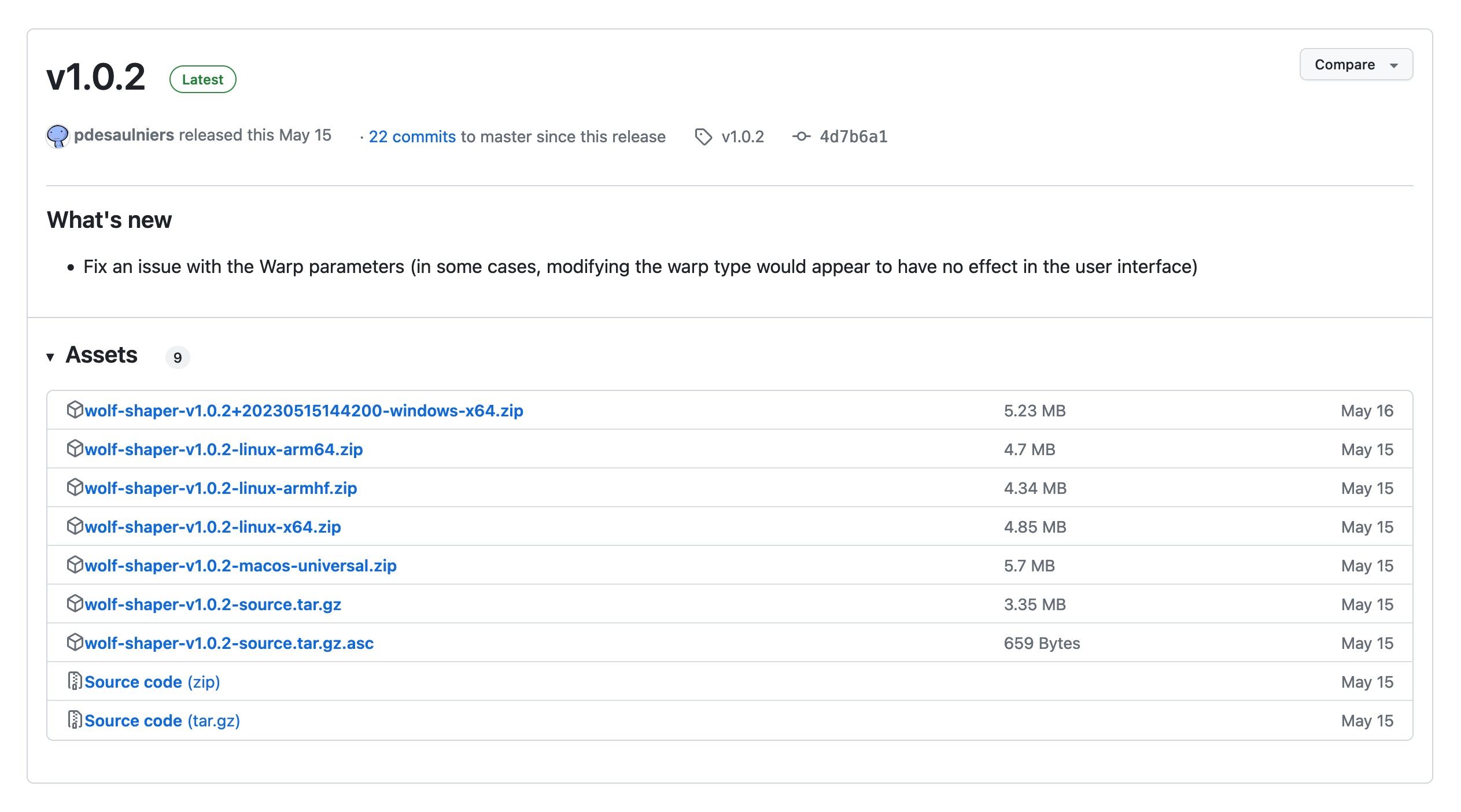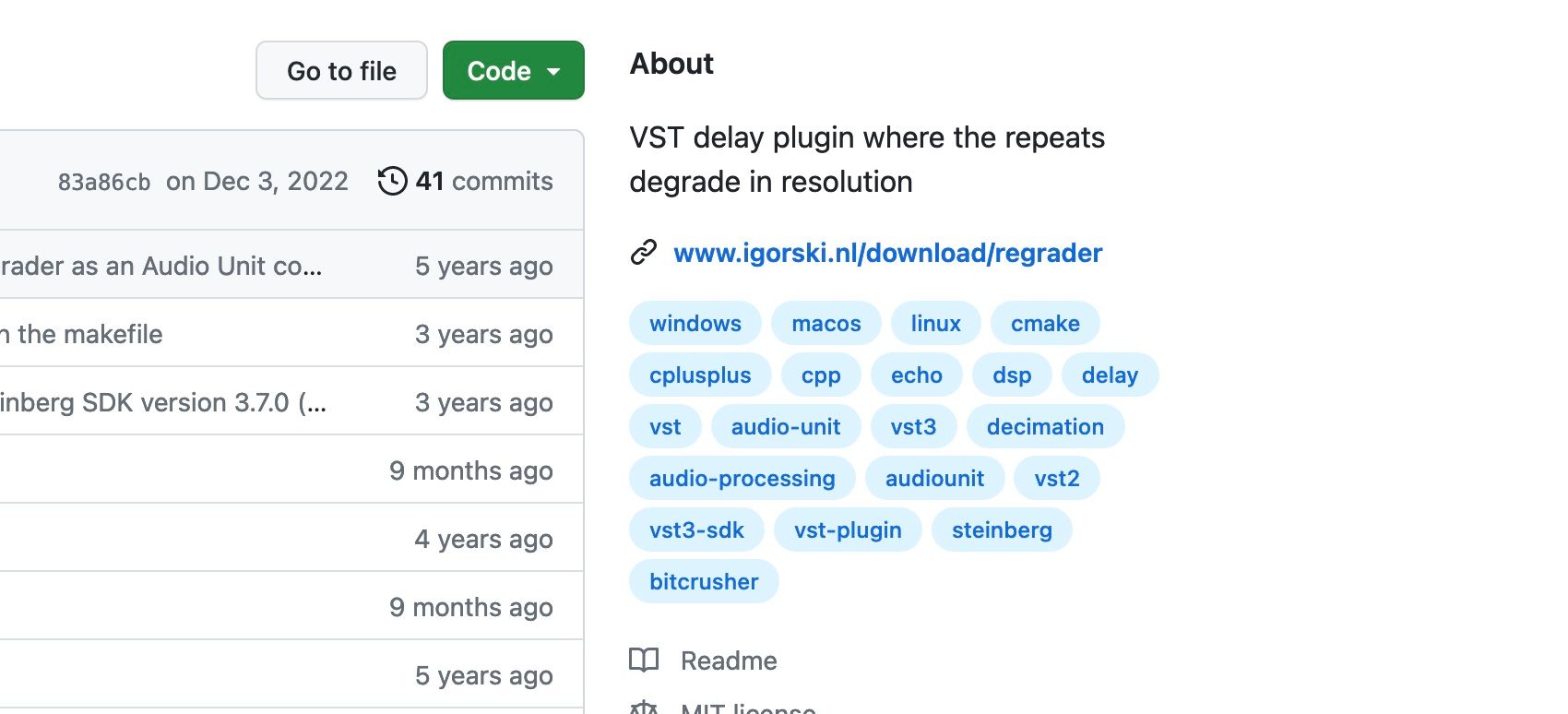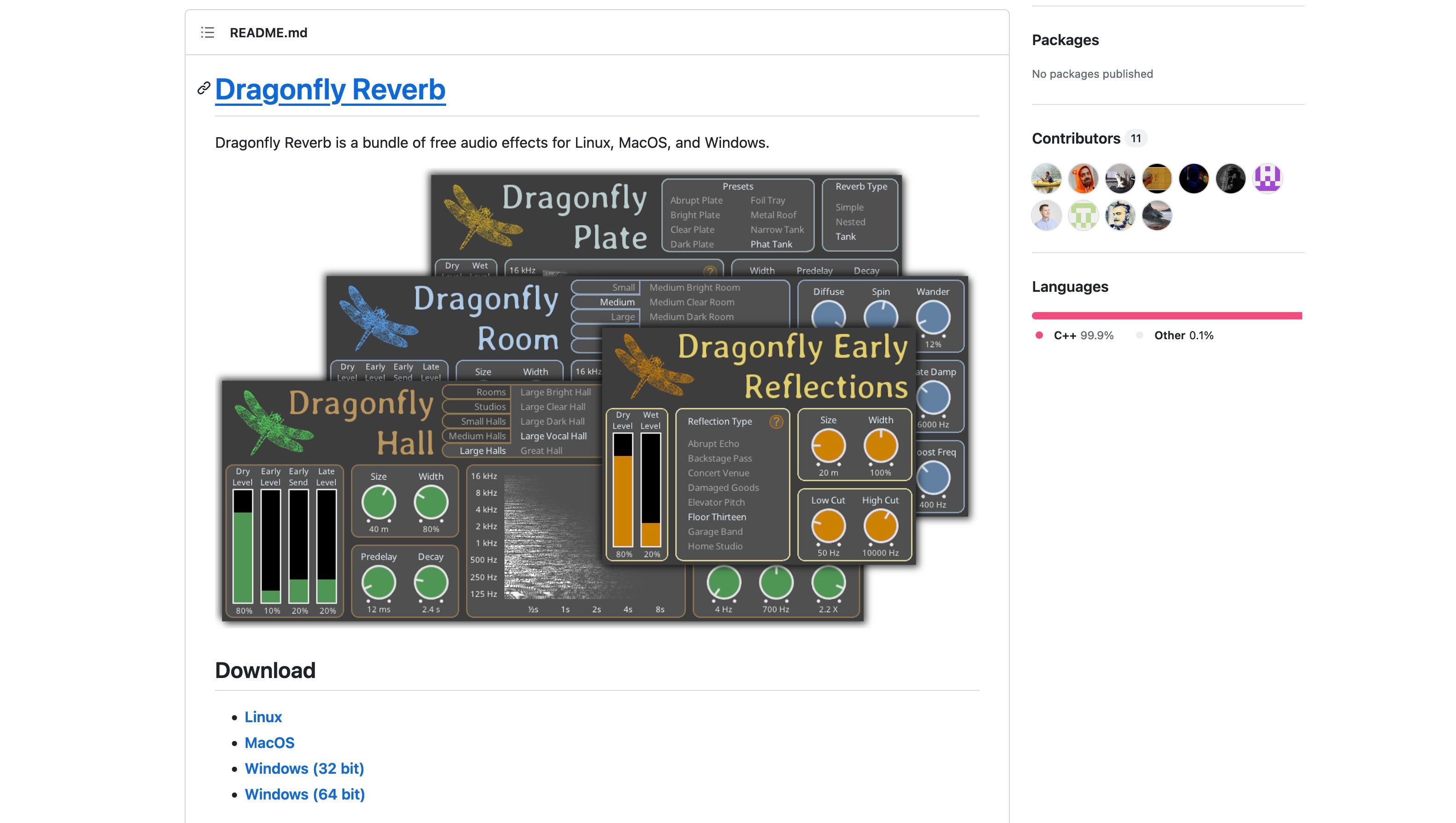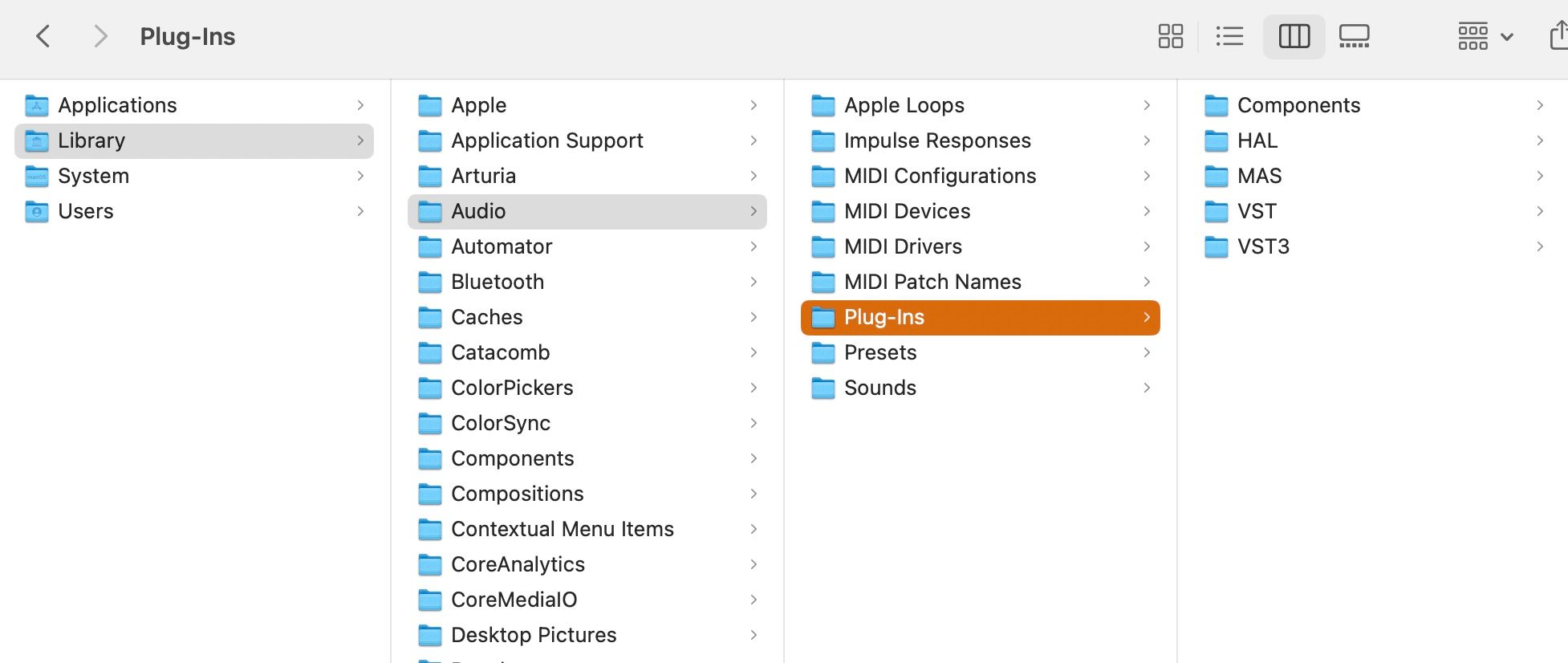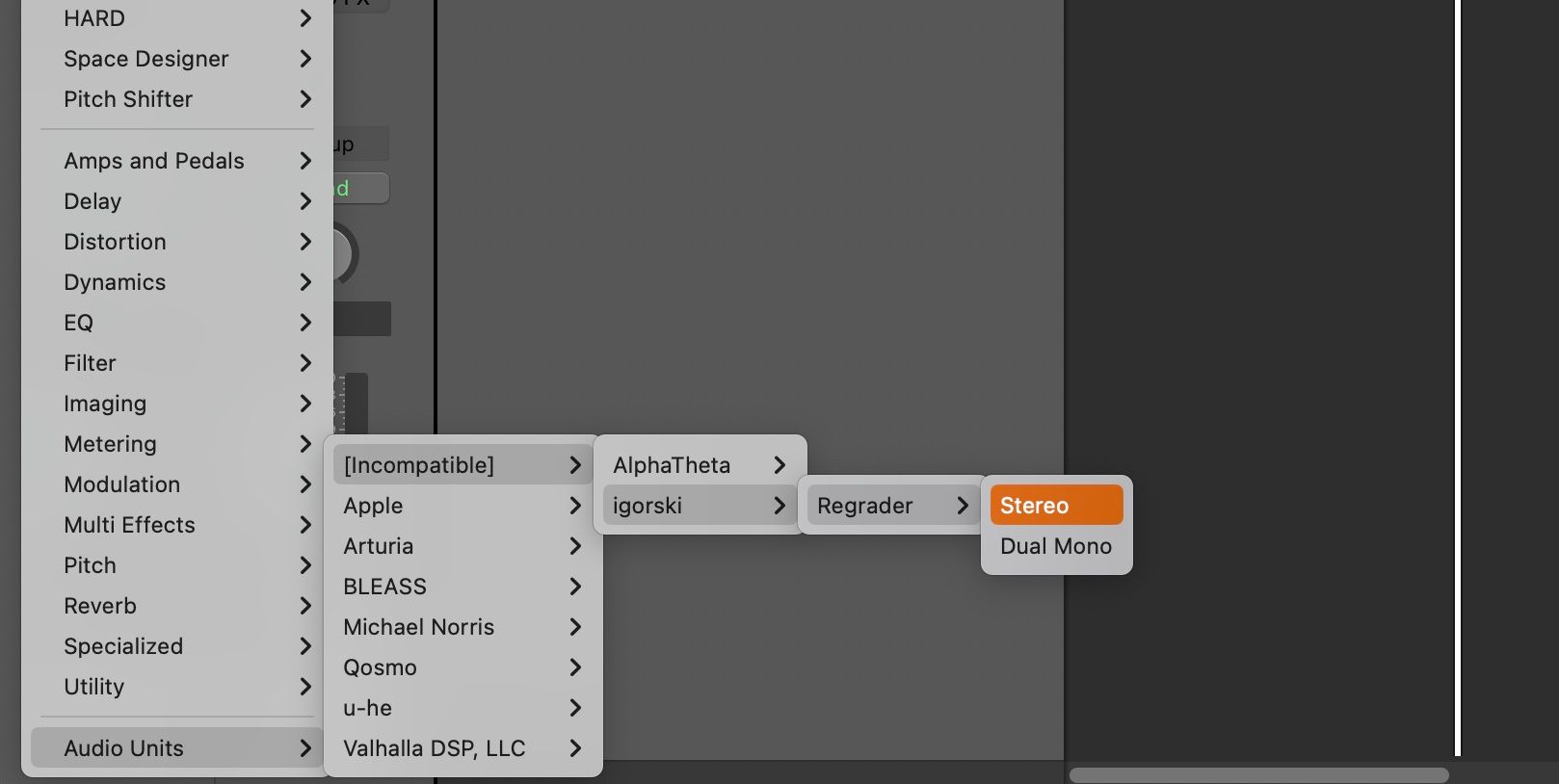
[ad_1]
GitHub hosts a number of free audio plugins created by lovers with open-source code. Even when you haven’t any programming information, you possibly can nonetheless make use of this wonderful useful resource by studying a number of key issues.
As soon as you understand what file to obtain and easy methods to set up it in your pc, you will not hesitate to obtain third-party plugins sooner or later.
Easy methods to Set up Audio Plugins From GitHub
GitHub may not be certainly one of your standard go-to web sites at no cost VST plugins, however it’s an extremely helpful useful resource that’s effectively price trying out.
When you’re new to GitHub, it is a standard platform for internet hosting and sharing open-source code, which is why you can find loads of revolutionary, distinctive, and artistic audio plugins flying underneath the radar right here.
Whereas somewhat daunting at first, you possibly can simply obtain plugins from GitHub as soon as you understand which file to obtain and the place to look. When you want a plugin to make use of for this tutorial, be at liberty to choose one from the gathering on the OpenAudio webpage or one of many plugins listed underneath GitHub’s audio-plugin subject.
1. Navigate to the Plugin’s GitHub Web page
As soon as you’ve got discovered a plugin that sounds fascinating, and also you’d prefer to strive it out, step one is to go to its GitHub web page. That is the place the code for the mission is stored. You will discover different parts of the mission on this web page, such because the license, the ReadMe file, and details about who contributed to it, and many others.
2. Verify the Plugin’s Compatibility
One of many key issues you want to search for is that if the plugin is suitable together with your working system. You might be more likely to discover this data within the README.md part on the principle web page. You may navigate to it by clicking ReadMe from the right-hand aspect panel, underneath the About heading. Alternatively, scroll down on the principle web page till you see it.
On this part, look to see if the plugin works on macOS, Home windows, or Linux. In some circumstances, it would listing the plugin sort as a substitute, both as VST or AU plugin.
This is what these phrases imply.
- VST/VST3: A extensively used plugin format that works on Home windows, Linux, and Mac. Most DAWs can run this plugin.
- AU or Audio Unit: The sort of plugin solely works on macOS computer systems. A possible level of confusion is that AU plugins have the file sort “.part”. Many DAWs additionally settle for this plugin format.
You could have to seek advice from your DAWs guide to see what plugins are suitable. As soon as you’ve got checked that the plugin works in your system and DAW, you possibly can transfer on to downloading the file.
3. Obtain the Newest Launch
Subsequent, search for the part named Releases on the right-hand aspect panel. A mission does not all the time have an official launch, but when it does, click on on the discharge labeled Newest. It’ll take you to a brand new web page containing a piece referred to as Belongings.
From the listing of information, you wish to discover the one which corresponds to your working system. For instance, you may see information that embody the title “macos-x64”, “macos-arm64”, “windows-x64” and “linux-arm64”. Click on on the file that has the title of your working system.
The numbers are additionally necessary to pay attention to. For instance, 64 refers to a 64-bit working system. In the meantime, phrases like “arm64” seek advice from Mac computer systems powered by Silicon chips—versus older computer systems which have an Intel chip.
See the troubleshooting part on the finish of this text for extra data on the variations between working methods.
4. Various: Search for a Obtain Hyperlink
Not all plugin pages can have a Launch part. In situations the place they do not, you want to search for a obtain hyperlink. Strive wanting within the About part on the right-hand panel, straight beneath the outline. It’ll have the hyperlink image (chain), and the colour of the textual content can be blue.
You can even search for a obtain hyperlink within the README.md part on the principle web page. As soon as you discover it, click on on the hyperlink and observe the directions for downloading the plugin. It does not matter the place you obtain it to your pc, as we are going to transfer the file later.
5. Obtain the Plugin
Upon getting downloaded the suitable plugin to your working methods, open the folder in your pc.
Within the instance beneath, the plugin referred to as Regrader got here with three folders: one for macOS and two for Home windows. Contained in the macOS folder have been three extra folders labeled AU, VST, and VST3.
Every plugin can have a distinct file construction, so the principle level is to pick out the file that works in your pc. Normally, it will likely be the title of the plugin adopted by the file extension .vst, .vst3 or .part. You solely want to repeat certainly one of these information.
6. Copy the Plugin File to Your Computer systems Plugin Listing
As soon as you’ve got situated the proper file, right-click on it and choose copy. Subsequent, you want to discover the plugin listing folder in your pc. Typically, you’ll find it within the following location:
- Home windows: C:Program FilesCommon FilesVST3.
- macOS: Library/Audio/Plug-Ins
To reveal on a macOS pc, open the Finder app, choose Go from the navigation bar, then click on Go to Folder. Within the search bar, sort “/Library/Audio/Plug-Ins”, then press return on the keyboard.
Right here, you’ll discover a separate folder for every plugin sort, together with Parts, VST, and VST3. Make sure that to stick the file into the folder that matches the file extension. In different phrases, a .vst3 file should go into the VST3 folder.
7. Open the Plugin in a DAW
All that is left is to check that your plugin works. Some DAWs have much less bother recognizing third-party plugins, whereas others could require troubleshooting.
Typically, your DAW ought to robotically scan for brand new plugins while you open the appliance. The plugin can then be situated within the standard plugins folder or accessed through the results slot on a observe.
In case your plugin does not seem within the standard place, we’ll clarify a number of issues you are able to do to troubleshoot.
Troubleshooting Plugin Set up
A plugin failing to indicate up in your DAW will be extraordinarily annoying. There will be a variety of the reason why this occurs, so the most effective plan is to troubleshoot the issue one factor at a time.
This is an inventory of issues you possibly can attempt to repair the issue of a VST or AU plugin not showing in your DAW.
- Give up and reopen your DAW. This forces the app to re-scan for brand new plugins.
- You can even strive restarting your pc to present your DAW an opportunity to refresh.
- Verify that the plugin is within the appropriate folder. Keep in mind that a .vst3 file should not be confused with the common VST folder, for instance. Likewise, a file with the extension .part wants to enter the Element folder.
- Verify that you’ve downloaded the proper plugin to your working system. It’s essential to know the distinction between 32-bit and 64-bit Home windows and choose the suitable file to obtain from GitHub. Likewise, for macOS customers, you possibly can discover out in case your Mac makes use of Intel or Apple Silicon. Briefly, if the file title consists of “x64”, the plugin is supposed for Intel Macs. And if it has “arm64”, it’s supposed for Apple Silicon Macs.
- You may all the time strive one of many different plugin sorts included within the obtain folder. If the VST3 plugin does not work, strive putting in the common VST as a substitute.
- For macOS computer systems, you’re more likely to encounter the error message “xx can’t be opened as a result of the developer can’t be verified”. When that seems, you possibly can bypass Apple’s Gatekeeper perform by way of your System Settings. Navigate to Safety & Privateness, scroll down till you discover the small print in regards to the blocked plugin, and click on Open Anyway to grant permission.
Getting Comfy Downloading Audio Plugins From GitHub
There are such a lot of implausible audio plugins posted to GitHub which might be free, revolutionary, and simple to take a look at. When you get aware of easy methods to obtain plugins from this code-sharing web site, you’ll really feel assured putting in third-party plugins sooner or later. When you run into issues just like the plugin not working in your DAW, working by way of a number of troubleshooting suggestions can resolve it very quickly.
[ad_2]

